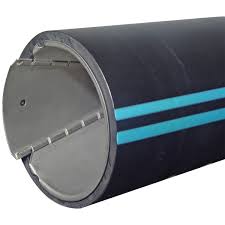Nov . 28, 2024 02:27 Back to list
HDPE Sprinkler Pipe Pricing and Service Guide for 2023
Understanding HDPE Sprinkler Pipe Prices A Comprehensive Overview
High-Density Polyethylene (HDPE) sprinkler pipes have gained significant popularity in agricultural and landscape irrigation systems due to their durability, flexibility, and resistance to corrosion. These pipes offer various advantages over traditional materials, including extended lifespan and reduced risk of leakage. As a result, understanding the pricing of HDPE sprinkler pipes is essential for consumers, farmers, and contractors looking to implement efficient irrigation solutions.
Factors Influencing HDPE Sprinkler Pipe Prices
Several variables contribute to the pricing of HDPE sprinkler pipes. Understanding these factors can help buyers make informed decisions.
1. Material Quality The grade of HDPE used in the manufacturing of sprinkler pipes is a crucial factor. Higher-grade materials that offer better performance and resistance to environmental stress will typically come at a higher price. Ensuring that the pipe meets relevant standards such as ASTM or ISO can also influence costs.
2. Pipe Diameter and Pressure Ratings HDPE pipes come in various diameters and pressure ratings, and larger diameters or higher pressure capacities generally incur higher costs. Buyers should assess their specific irrigation needs to determine the appropriate size and type, balancing performance with expense.
3. Length of Pipe The price often depends on the length of the pipe purchased. Typically, longer lengths may result in slightly lower per-meter costs. Volume discounts can also be a consideration for large-scale projects.
4. Special Features Some HDPE sprinkler pipes come with additional features, such as UV resistance or built-in fittings, which can add to the overall cost. Customization options may also lead to higher pricing.
5. Manufacturer and Brand Different manufacturers offer varying quality levels and pricing structures. Established brands with a reputation for quality may charge more, while less known brands might offer competitive prices. Always consider the balance between cost and reliability.
6. Market Demand The market dynamics of supply and demand can significantly affect prices. During planting seasons or periods of increased agricultural activity, prices may rise due to heightened demand. Keeping an eye on market trends can inform purchasing decisions.
7. Shipping and Handling Costs Depending on the supplier’s location and the distance to your project site, shipping can influence the final cost. Considering local suppliers can help minimize these expenses.
Price Ranges for HDPE Sprinkler Pipes
hdpe sprinkler pipe price list service

As of the latest data, prices for HDPE sprinkler pipes can vary widely based on the factors outlined above. Generally, prices can range from approximately $0.50 to $3.50 per linear meter, depending on the specifications. Smaller diameters typically cost less than larger ones, while specialized or higher-grade pipes command premium prices.
Comparing Prices Where to Buy
When looking for HDPE sprinkler pipes, it is vital to compare prices from various suppliers and manufacturers. Local irrigation supply stores, agricultural co-ops, and online retailers often have competitive pricing. Additionally, contacting manufacturers directly can yield bulk pricing options.
Benefits of Investing in HDPE Sprinkler Pipes
1. Durability HDPE pipes are known for their resistance to chemical leaching and corrosion, ensuring a long service life with minimal maintenance.
2. Flexibility The flexibility of HDPE allows for easier installation in various landscapes, accommodating shifts in the terrain without cracking.
3. Environmentally Friendly HDPE is recyclable, making it a more sustainable option for irrigation systems compared to PVC or metal alternatives.
4. Efficiency These pipes provide efficient water delivery, which is crucial for conserving resources in agricultural settings.
Final Considerations
Investing in HDPE sprinkler pipes is a significant decision that requires careful consideration of prices and the specific needs of your irrigation project. Conducting thorough research, comparing suppliers, and understanding the factors influencing cost will ultimately lead to the best purchase decision. While the initial investment may vary, the long-term benefits of using HDPE pipes—such as reduced water loss and maintenance costs—often outweigh the initial expenses.
By equipping yourself with knowledge of HDPE sprinkler pipe pricing and its benefits, you can contribute to a more sustainable and effective irrigation system, helping to ensure the success of your agricultural or landscaping projects.
-
High-Quality PVC Borehole Pipes Durable & Versatile Pipe Solutions
NewsJul.08,2025
-
High-Quality PVC Perforated Pipes for Efficient Drainage Leading Manufacturers & Factories
NewsJul.08,2025
-
High-Quality PVC Borehole Pipes Durable Pipe Solutions by Leading Manufacturer
NewsJul.08,2025
-
High-Quality PVC Borehole Pipes Reliable PVC Pipe Manufacturer Solutions
NewsJul.07,2025
-
High-Quality UPVC Drain Pipes Durable HDPE & Drain Pipe Solutions
NewsJul.07,2025
-
High-Quality Conduit Pipes & HDPE Conduit Fittings Manufacturer Reliable Factory Supply
NewsJul.06,2025

